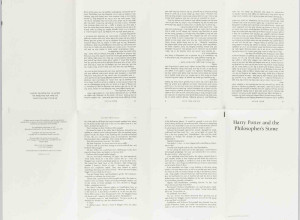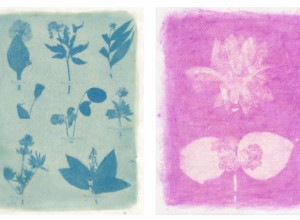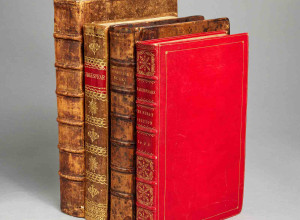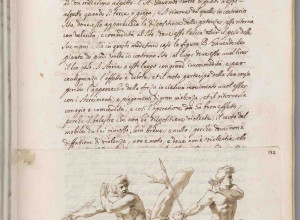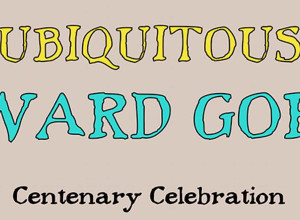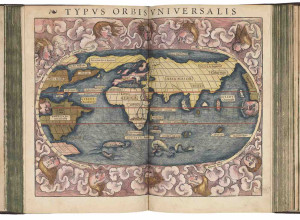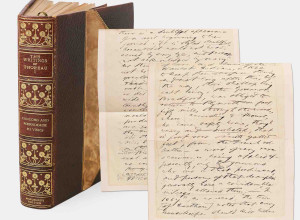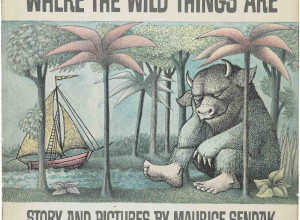Sotheby's to Offer the Earliest Illuminated Hebrew Bible from Spain to Ever Appear at Auction
 New York—Sotheby’s New York sale of Important Judaica on 20 December will offer one of the finest decorated Hebrew Bibles from Spain to ever come to auction. Produced in Castile during the first half of the 14th century, this distinguished illuminated manuscript is a remarkable testament to the cross-cultural influences in the Golden Age of medieval Spain. Hailing from the renowned collection of J.E. Safra, the Bible will be offered this December with a pre-sale estimate of $3.5/5 million.
New York—Sotheby’s New York sale of Important Judaica on 20 December will offer one of the finest decorated Hebrew Bibles from Spain to ever come to auction. Produced in Castile during the first half of the 14th century, this distinguished illuminated manuscript is a remarkable testament to the cross-cultural influences in the Golden Age of medieval Spain. Hailing from the renowned collection of J.E. Safra, the Bible will be offered this December with a pre-sale estimate of $3.5/5 million.
As the earliest-known complete illuminated Hebrew Bible from Spain to ever appear at auction, the Bible is superlative in a number of ways. It is one of only six complete, decorated Hebrew Bibles in private hands. Of those examples, only three have come to auction in the past century.
THE HISTORY OF CASTILIAN HEBREW BIBLES
This distinguished illuminated Hebrew Bible is an exceptionally important exemplar of medieval book arts and literary culture. The tradition of Hebrew Bible production which flourished in Castile beginning in the 1230s, began to decline due to the deteriorating political and economic situation of Spanish Jewry, persecutions connected with the Black Plague of 1348-1349, and the anti-Jewish riots of 1391. Thus, only three illuminated Hebrew Bibles from 14th-century Castile have survived, making the present manuscript incredibly unique. The high quality of its parchment, the generous quantity of its carpet pages, and the lavishness of their design, as well as the formal repertoire of the micrographic decoration, make this volume an exceptional witness to the glorious tradition of medieval Hebrew manuscript illumination.
The tradition of illuminated Hebrew Bibles first began to flourish during the reign of Ferdinand III (1217-1252) and continued until the expulsions of the Jews from Spain in 1492 and from Portugal in 1496-1497. While the production of these Bibles can be ascribed to different artistic schools located in Castile, Navarre, Catalonia and Portugal, the present manuscript’s lavish decoration, both painted and micrographic (an embellishment whereby a specialized scribe fashions minute script into ornamental patterns) suggest that it was produced in Castile during the first half of the 14th-century.
When the first embellished Hebrew Bibles began to appear in Castile during the early 13th-century, their patterns of decoration were based almost exclusively on an Islamic artistic repertoire, as seen in the present volume with its geometrically planned micrographic carpet pages at the end of the codex and micrographic frames with interlaced designs placed around significant biblical texts. Some of these patterns share commonalities in format and composition with illuminations in Qur’ans, as well as tooled patterns in book bindings that were produced in Spain by Muslim, Jewish, and Christian craftsmen into the 16th-century. It was only gradually-during the 14th-century- that the adornment of Hebrew Bibles in Spain began to reflect some of the motifs common in Gothic art, which was dominant in Iberian Christian culture of the 13th, 14th, and 15th centuries. The Bible’s decoration notably reflects these artistic interactions among the three coexisting religions, Christianity, Islam, and Judaism, a phenomenon referred to as convivencia.





